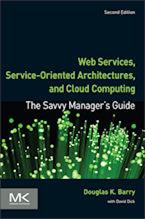Federated Network Identity
Federated identity allows users to link identity information between accounts without centrally storing personal information. Also, users can control when and how their accounts and attributes are linked and shared between domains and Service Providers, allowing for greater control over their personal data. In practice, this means that users can be authenticated by one company or website and be recognized and delivered personalized content and services in other locations without having to re-authenticate or sign on with a separate username and password.
Federated network identity specifications described on this site are listed below. You can also navigate among the specifications by using the menu tree at the left of each page.
- Identity Federation Framework (ID-FF)
- Identity Service Interface Specifications (ID-SIS)
- Identity Web Services Framework (ID-WSF)
Context for Federated Network Identity
Related Articles for Federated Network Identity
Author
Douglas K Barry
Principal
You may use this material for your work or classes. Reprint Policy. Be sure to check the menu at the left for other articles available on this site.
The Savvy Manager's Guide
Douglas K Barry is also the author of a book that explains Web Services, service-oriented architecture, and Cloud Computing in an easy-to-understand, non-technical manner.
Web Services, Service-Oriented Architectures, and Cloud Computing: The Savvy Manager's Guide (Second Edition)
by Douglas K Barry with David Dick
This is a guide for the savvy manager who wants to capitalize on the wave of change that is occurring with Web Services, service-oriented architecture, and—more recently—Cloud Computing. The changes wrought by these technologies will require both a basic grasp of the technologies and an effective way to deal with how these changes will affect the people who build and use the systems in our organizations. This book covers both issues. Managers at all levels of all organizations must be aware of both the changes that we are now seeing and ways to deal with issues created by those changes.

